This view of the Owner's Manual contains the very latest information, which may vary slightly from the printed Owner's Manual originally provided with your vehicle. It may also describe content that is not on or operates differently on your vehicle. Please consider the Owner's Manual originally provided with your vehicle as the primary source of information for your vehicle.

The information contained in this publication was correct at the time of release.In the interest of continuous development, we reserve the right to change specifications, design or equipment at any time without notice or obligation.No part of this publication may be reproduced, transmitted, stored in a retrieval system or translated into any language in any form by any means without our written permission.Errors and omissions excepted.
Copyright © 2024 Ford Motor Company
Changing a Road Wheel (If Equipped)


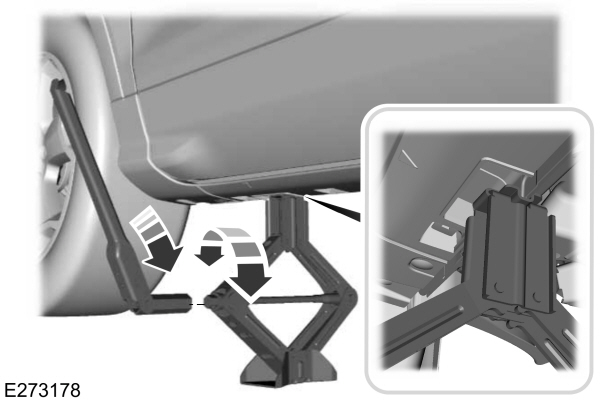
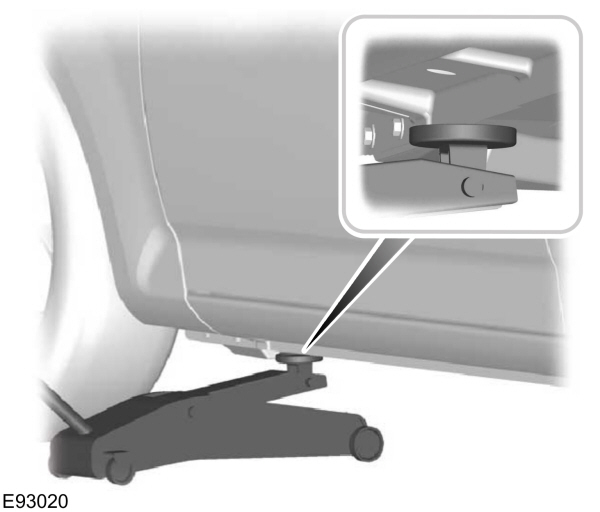

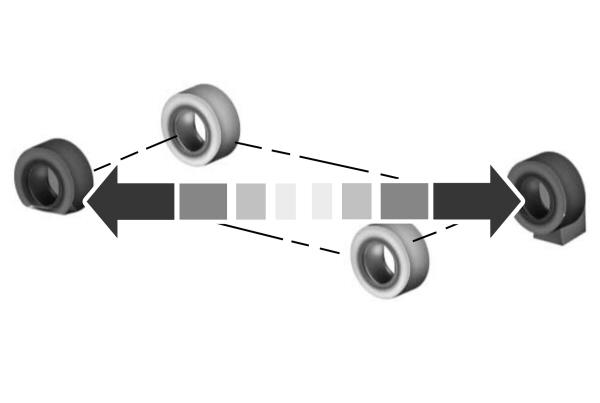

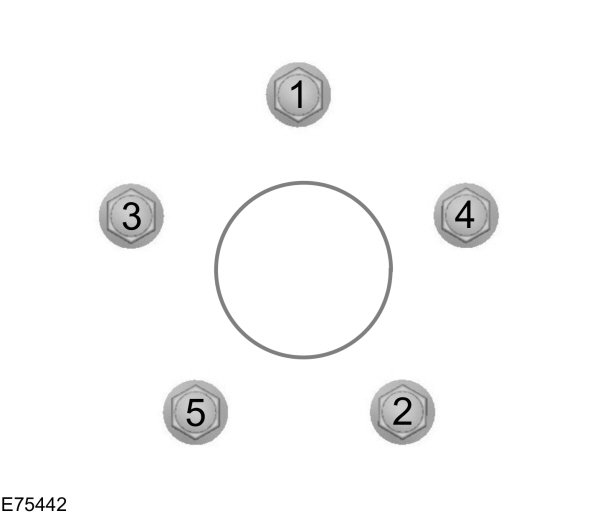
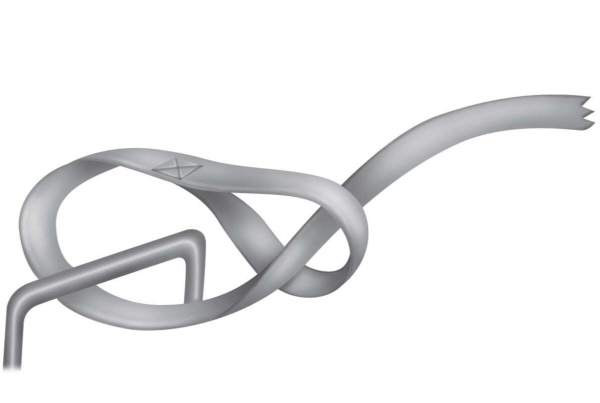
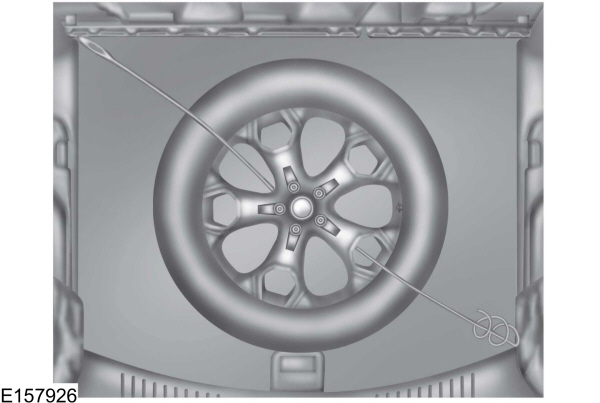

 WARNING:
The tire pressure monitoring system is not a substitute for manually checking tire pressures. You should periodically check tire pressures using a pressure gauge. Failure to correctly maintain tire pressures could increase the risk of tire failure, loss of control, vehicle rollover and personal injury.
WARNING:
The tire pressure monitoring system is not a substitute for manually checking tire pressures. You should periodically check tire pressures using a pressure gauge. Failure to correctly maintain tire pressures could increase the risk of tire failure, loss of control, vehicle rollover and personal injury. WARNING:
If the tire pressure monitor sensor becomes damaged it may not function.
WARNING:
If the tire pressure monitor sensor becomes damaged it may not function. |
Note:
You should only use tire sealants in roadside emergencies as they may cause damage to the tire pressure monitoring system sensor.
Note:
The tire pressure monitoring system indicator light illuminates when the spare tire is in use. To restore the full function of the monitoring system, all road wheels equipped with tire pressure monitoring sensors must be mounted on the vehicle.
If you get a flat tire when driving, do not apply the brake heavily. Instead, gradually decrease your speed. Hold the steering wheel firmly and slowly move to a safe place on the side of the road.
Have a flat serviced by an authorized dealer to prevent damage to the tire pressure monitoring system sensors.See
Tire Pressure Monitoring System
.
Replace the spare tire with a road tire as soon as possible. During repairing or replacing of the flat tire, have the authorized dealer inspect the tire pressure monitoring system sensor for damage.
Dissimilar Spare Wheel and Tire Assembly Information
 WARNING:
Failure to follow these guidelines could result in an increased risk of loss of vehicle control, injury or death.
WARNING:
Failure to follow these guidelines could result in an increased risk of loss of vehicle control, injury or death. |
If you have a dissimilar spare wheel and tire, then it is for temporary use only. This means that if you need to use it, you should replace it as soon as possible with a road wheel and tire assembly that is the same size and type as the road tires and wheels that were originally provided by Ford. If the dissimilar spare tire or wheel is damaged, it should be replaced rather than repaired.
A dissimilar spare wheel and tire assembly is a spare wheel and tire assembly that is different in brand, size or appearance from the road tires and wheels and can be one of three types:
1. T-type mini-spare: This spare tire begins with the letter T for tire size and may have Temporary Use Only molded in the sidewall.
2. Full-size dissimilar spare with label on wheel: This spare tire has a label on the wheel that states: THIS WHEEL AND TIRE ASSEMBLY FOR TEMPORARY USE ONLY.
When driving with one of the dissimilar spare tires listed above, do not:
- Exceed 80 km/h (50 mph).
- Load the vehicle beyond maximum vehicle load rating listed on the Safety Compliance Label.
- Tow a trailer.
- Use snow chains on the end of the vehicle with the dissimilar spare tire.
- Use more than one dissimilar spare tire at a time.
- Use commercial car washing equipment.
- Try to repair the dissimilar spare tire.
- Handling, stability and braking performance.
- Comfort and noise.
- Ground clearance and parking at curbs.
- Winter weather driving capability.
- Wet weather driving capability.
- All-wheel driving capability
3. Full-size dissimilar spare without label on wheel
When driving with the full-size dissimilar spare wheel and tire assembly, do not: - Exceed 113 km/h (70 mph).
- Use more than one dissimilar spare wheel and tire assembly at a time.
- Use commercial car washing equipment.
- Use snow chains on the end of the vehicle with the dissimilar spare wheel and tire assembly.
- Handling, stability and braking performance.
- Comfort and noise.
- Ground clearance and parking at curbs.
- Winter weather driving capability.
- Wet weather driving capability.
- All-wheel driving capability.
- Towing a trailer.
- Driving vehicles equipped with a camper body.
- Driving vehicles with a load on the cargo rack.
Drive cautiously when using a full-size dissimilar spare wheel and tire assembly and seek service as soon as possible.
Lug Nuts
You can obtain a replacement locking lug nut key and replacement locking lug nuts from an authorized dealer using the reference number certificate.
Location of the Jack and Tools
Your spare wheel and tire assembly are is under the carpeted cargo area floor. The vehicle jack is under the spare tire. The lug wrench is in the left side storage foam next to the spare tire.

Note:
Vehicles with a temporary mobility kit do not have a spare wheel, vehicle jack or wheel brace.
Jacking and Lifting Points
 WARNING:
Use only the specified jacking points. If you use other positions, you may damage the body, steering, suspension, engine, braking system or the fuel lines.
WARNING:
Use only the specified jacking points. If you use other positions, you may damage the body, steering, suspension, engine, braking system or the fuel lines. |
Small arrow-shaped marks on the sills show the location of the jacking points.

| A B |


We recommend using a workshop type hydraulic jack for changing between summer and winter tires.
Note:
The vehicle jack does not require maintenance or additional lubrication over the service life of your vehicle.
Tire Change Procedure
 WARNING:
No person should place any portion of their body under a vehicle that is supported by a jack.
WARNING:
No person should place any portion of their body under a vehicle that is supported by a jack. WARNING:
It is recommended that the wheels of the vehicle be chocked, and that no person should remain in a vehicle that is being jacked.
WARNING:
It is recommended that the wheels of the vehicle be chocked, and that no person should remain in a vehicle that is being jacked. WARNING:
Never place anything between the vehicle jack and the ground.
WARNING:
Never place anything between the vehicle jack and the ground. WARNING:
Never place anything between the vehicle jack and your vehicle.
WARNING:
Never place anything between the vehicle jack and your vehicle. WARNING:
The jack supplied with this vehicle is only intended for changing wheels. Do not use the vehicle jack other than when you are changing a wheel in an emergency.
WARNING:
The jack supplied with this vehicle is only intended for changing wheels. Do not use the vehicle jack other than when you are changing a wheel in an emergency. WARNING:
Check that the vehicle jack is not damaged or deformed and the thread is lubricated and clean.
WARNING:
Check that the vehicle jack is not damaged or deformed and the thread is lubricated and clean. WARNING:
The jack should be used on level firm ground wherever possible.
WARNING:
The jack should be used on level firm ground wherever possible. WARNING:
Park your vehicle so that you do not obstruct the flow of traffic or place yourself in any danger and set up a warning triangle.
WARNING:
Park your vehicle so that you do not obstruct the flow of traffic or place yourself in any danger and set up a warning triangle. WARNING:
Make sure that your vehicle is on firm and level ground with the front wheels pointing straight ahead.
WARNING:
Make sure that your vehicle is on firm and level ground with the front wheels pointing straight ahead. WARNING:
Switch the ignition off and apply the parking brake.
WARNING:
Switch the ignition off and apply the parking brake. WARNING:
If your vehicle has a manual transmission, shift into first or reverse gear. If your vehicle has an automatic transmission, shift into park (P).
WARNING:
If your vehicle has a manual transmission, shift into first or reverse gear. If your vehicle has an automatic transmission, shift into park (P). WARNING:
Make sure all passengers are out of your vehicle.
WARNING:
Make sure all passengers are out of your vehicle. WARNING:
Secure the diagonally opposite wheel with an appropriate block or wheel chock.
WARNING:
Secure the diagonally opposite wheel with an appropriate block or wheel chock. WARNING:
Make sure that the vehicle jack is vertical to the jacking point and the base is flat on the ground.
WARNING:
Make sure that the vehicle jack is vertical to the jacking point and the base is flat on the ground. WARNING:
Park your vehicle in such a position that neither the traffic nor you are hindered or endangered.
WARNING:
Park your vehicle in such a position that neither the traffic nor you are hindered or endangered. |

- Park on a level surface, set the parking brake and activate the hazard flashers.
- Apply the parking brake, place the transmission in park (P) or reverse (R) for a manual transmission. Switch the ignition off and set up a warning triangle.
- Block the wheel diagonally opposite the flat tire. For example, if the left front tire is flat, block the right rear wheel.

- Remove the spare tire, jack and wrench from the spare tire compartment.
- Remove the flat tire retainer strap from the jack base.
- Loosen each wheel lug nut one-half turn counterclockwise, but do not remove them until the wheel is raised off the ground.

- Place the jack at the jacking point next to the tire you are changing. Turn the lug wrench handle clockwise until the wheel is off the ground.
- Remove the lug nuts with the lug wrench.
- Replace the flat tire with the spare tire, making sure the valve stem is facing outward.
- Reinstall the lug nuts on the hub. Do not fully tighten the lug nuts until you lower the wheel.
- Turn the wrench handle counterclockwise to lower the vehicle to the ground.
- Remove the jack and fully tighten the lug nuts in the order shown.See .

- Stow the flat tire, jack and wrench back in the spare tire compartment.
- Unblock the wheel and get the warning triangle.
Stowing the Flat Tire
- Place the flat tire on the luggage compartment floor.

- Locate the cargo tie-down near the seatback. Push the loop of the retainer strap through the tie-down. Thread the non-loop end through the loop.

- Weave the retainer strap through the wheel openings.
- Locate the front cargo tie-down at the opposite corner of the luggage compartment. Thread the retainer strap through the tie-down and pull tight.

- Secure by tying a 2-half hitch knot.
